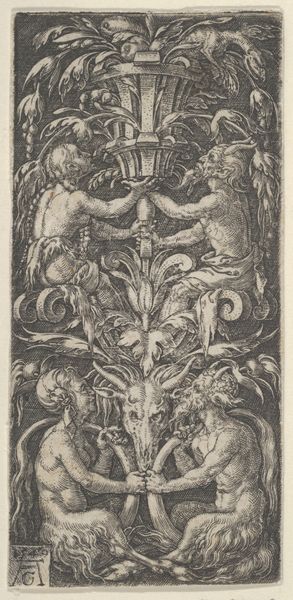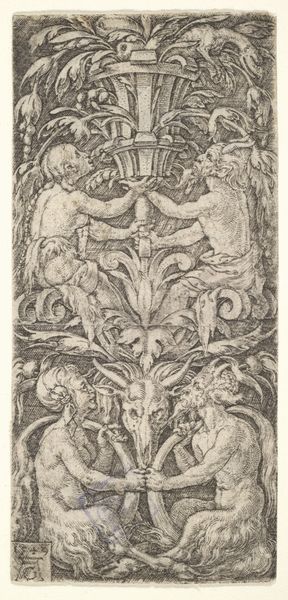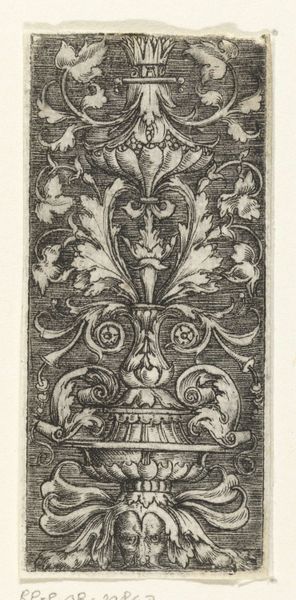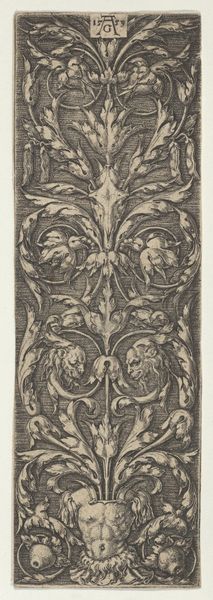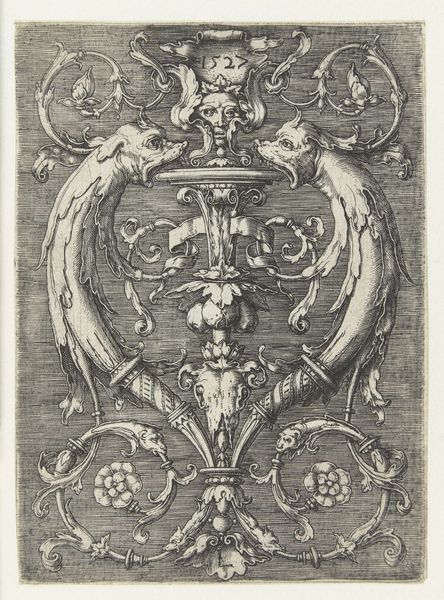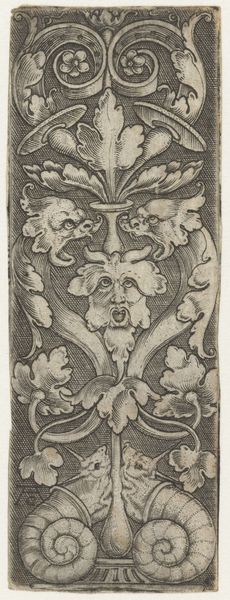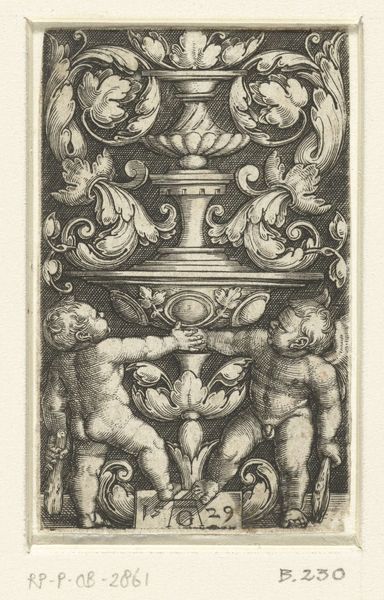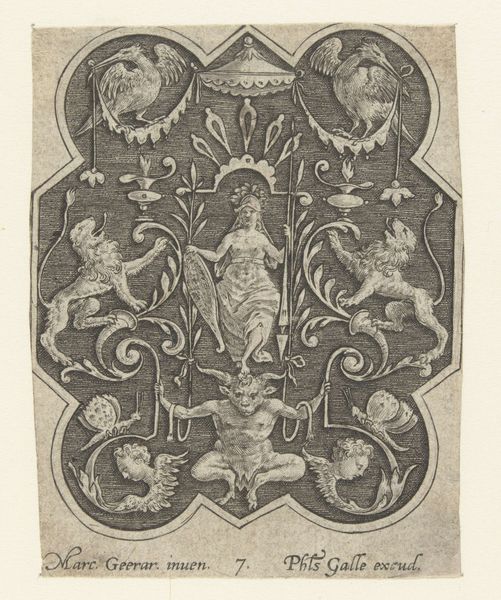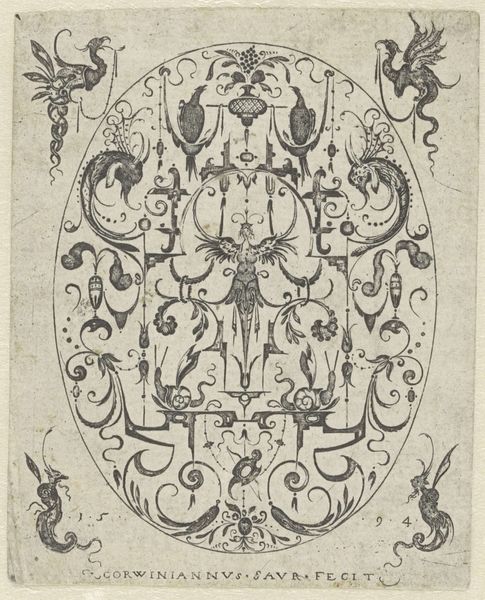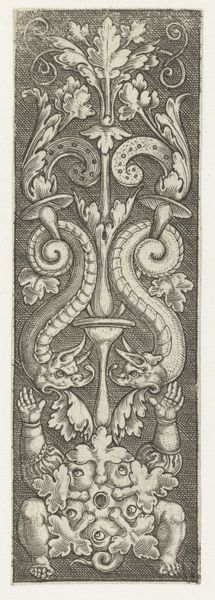
Sprig of Ornamental Foliage with Two Masks and Two Dolphins 1530
0:00
0:00
print, engraving
# print
#
form
#
line
#
northern-renaissance
#
decorative-art
#
engraving
Copyright: National Gallery of Art: CC0 1.0
Editor: This is "Sprig of Ornamental Foliage with Two Masks and Two Dolphins," an engraving by Heinrich Aldegrever from 1530. It feels incredibly detailed and ornate, almost like something you'd see decorating a piece of furniture. What do you see in this piece? Curator: As a materialist, I'm drawn to the production of this engraving. Consider the labor involved in creating such fine lines on a metal plate in the 16th century. It wasn't simply artistic inspiration; it was skilled craftsmanship. The social context is interesting too. Decorative prints like this weren’t "high art" as we think of it now, but they were a commodity. They served a purpose, likely adorning everyday objects and conveying status. How does this relate to your understanding of ‘high’ and ‘low’ art? Editor: That's a good point. I hadn’t considered it as a commodity. It definitely blurs the lines. Looking closer, how was consumption relevant to art like this? Curator: This print's materiality connects directly to consumption. It offered accessible luxury, a way to bring artistry into more homes than just those of the wealthy. These prints helped disseminate design ideas. This availability fueled artistic trends. How do you think the relatively inexpensive nature of prints impacted design at the time? Editor: So it was a democratization of art to a certain extent. Making decorative design and artistic sensibilities accessible for the aspiring middle-class homeowner? Curator: Precisely. It prompts us to think about what we value when considering art. Is it just the artist’s intention or should we also be aware of how the work operated within the material world, influencing social dynamics of taste and class? Editor: I see it now, looking at the artistic trends through the lens of consumerism. I guess I learned to not think about "art" and its production and how those things affect access and style. Curator: Yes, understanding the processes and its social contexts allows a deeper engagement with any piece of art.
Comments
No comments
Be the first to comment and join the conversation on the ultimate creative platform.

